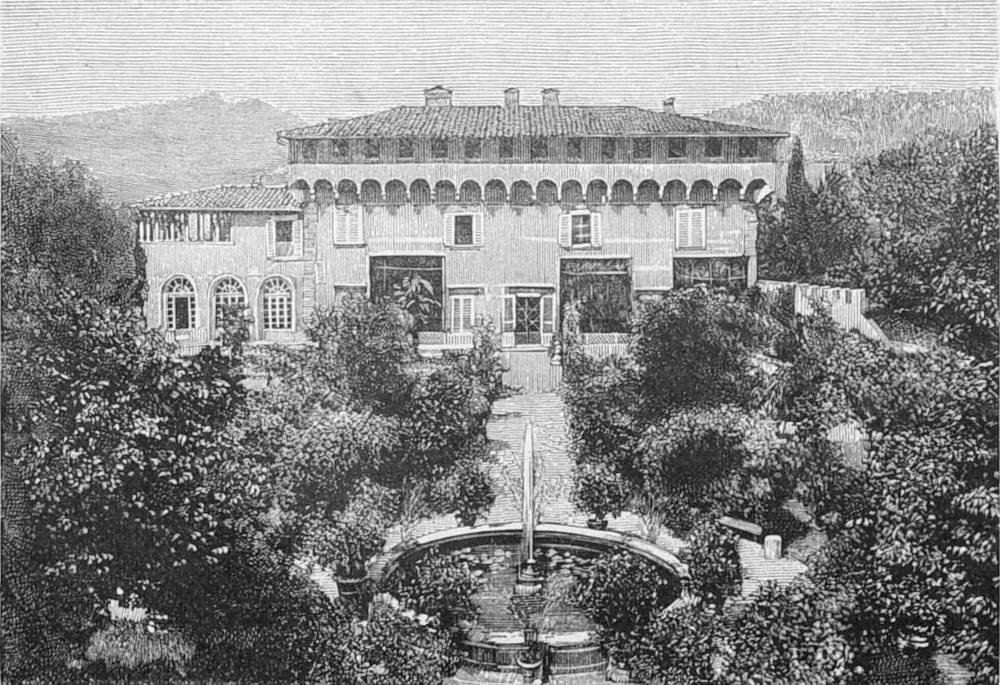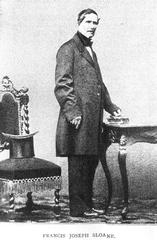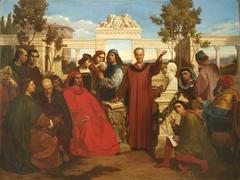
Villa Medici at Careggi Florence: Visiting Hours, Tickets, and Historical Sites Guide
Date: 14/06/2025
Introduction
Nestled on the gentle slopes northwest of Florence, the Villa Medici at Careggi is an enduring emblem of Renaissance architecture, intellectual legacy, and Medici family power. Acquired by Giovanni di Bicci de’ Medici in the early 15th century, the villa was later transformed into a Renaissance masterpiece by Cosimo de’ Medici, the Elder, with the help of architect Michelozzo di Bartolomeo. Over the centuries, Villa Careggi became not only a symbol of wealth and influence but also a crucible for the philosophical and artistic currents that shaped the Florentine Renaissance. This comprehensive guide details the villa’s history, cultural importance, visiting hours, ticketing, travel tips, and nearby attractions to help you plan a memorable visit (bellavista-villas.com; Gardenvisit; Visit Tuscany).
Table of Contents
- Introduction
- Historical Overview
- Architectural and Garden Features
- Visitor Information: Hours, Tickets, and Accessibility
- Nearby Attractions and Travel Tips
- Special Experiences and Guided Tours
- Visuals and Media Recommendations
- Frequently Asked Questions (FAQ)
- Conclusion
- References
Historical Overview
Origins and Early History
Villa Medici at Careggi’s story begins in 1417, when Giovanni di Bicci de’ Medici, founder of the powerful Medici banking family, purchased the estate. Initially a fortified country house, Careggi was typical of the Tuscan countryside and served both as a residence and as the center of agricultural activities. Its acquisition reflected the rising status and ambitions of the Medici, who would go on to shape Florence’s political and cultural landscape (bellavista-villas.com).
Architectural Evolution
The villa’s transformation from a medieval fortress to a Renaissance residence was spearheaded by Cosimo the Elder. Michelozzo di Bartolomeo’s redesign introduced symmetry, proportion, and the seamless integration of indoor and outdoor spaces. The central courtyard, elegant loggias, and large windows allowed for ample light and connected the villa with its geometric Renaissance gardens. These innovations became hallmarks of Medici villa architecture, influencing similar estates throughout Tuscany (Gardenvisit).
Over time, further modifications reflected new tastes, particularly in the 16th, 17th, and 19th centuries. However, the villa’s Renaissance core remains intact, offering a window into the era’s architectural ideals.
Renaissance Significance
Villa Careggi was not just an architectural marvel; it was a crucible for Renaissance humanism. Under Cosimo the Elder, the villa hosted the Platonic Academy, led by Marsilio Ficino. Here, scholars, philosophers, and artists revived classical philosophy, translating Plato’s works and fostering the intellectual currents that defined the Renaissance (Beatesca).
Notable Residents
Cosimo the Elder, Lorenzo the Magnificent, and Marsilio Ficino all lived and worked at Careggi. Lorenzo, in particular, used the villa as a retreat from Florence’s political pressures and as a gathering place for poets, artists, and thinkers. He died at Careggi in 1492, marking the end of an extraordinary era of Medici patronage (Trame d’Arte Firenze).
Role in Florentine and Italian History
The villa set a precedent for the Medici tradition of rural retreats, blending leisure, learning, and agricultural management. Its association with the Platonic Academy underscores its influence on the intellectual and artistic development of the Renaissance (Tuscany Now & More). Over the centuries, the estate passed through various hands but retained much of its historical character.
UNESCO World Heritage and Modern Relevance
In 2013, Villa Careggi and other Medici villas and gardens were inscribed as UNESCO World Heritage Sites, acknowledging their universal value in Renaissance culture and landscape design (Italia.it). Restoration is ongoing, with reopening anticipated in late 2025 or early 2026 (italiabsolutely.com).
Architectural and Garden Features
Architecture
Villa Medici at Careggi exemplifies the transition from medieval to Renaissance design. Michelozzo’s interventions softened the fortress-like elements with Renaissance features: loggias, arcaded courtyards, and harmonious proportions. The main façade is austere and symmetrical, while the rear façade opens to the gardens, emphasizing the connection between the villa and its landscape (Visit Tuscany).
Interior spaces, though usually closed to the public, historically featured high ceilings, frescoes, and fireplaces. In the 19th century, Francis Joseph Sloane added a lemon-house and exotic trees, blending Renaissance and Romantic sensibilities (Gardenvisit).
Gardens
One of Italy’s earliest Renaissance gardens, Careggi’s grounds feature geometric parterres, shaded walkways, and a remarkable botanical variety—fruit trees, aromatic herbs, and flowers. High stone walls provide intimacy, while water features and statuary add to the garden’s refined atmosphere. Later additions include exotic trees and a lemon-house, reflecting evolving tastes (Gardenvisit).
Visitor Information: Hours, Tickets, and Accessibility
Visiting Hours
The villa is currently closed for restoration, with reopening expected by late 2025 or early 2026. Once open, standard visiting hours are anticipated to be Tuesday to Sunday, 9:00 AM – 6:00 PM. Always consult the official website for up-to-date information (italiabsolutely.com).
Tickets and Prices
Expected ticket prices are around €10 for adults, with reduced rates for seniors, students, and children. Tickets will be available online and at the entrance; advance booking is strongly recommended, especially during peak periods.
Accessibility
Restoration efforts aim to maximize accessibility, including wheelchair access to main areas and pathways. Due to the historic structure, some areas may remain challenging; contact the administration in advance for details.
How to Get There
Villa Careggi is 7 km northwest of Florence’s center. Public buses and tram line T1 (to Careggi University Medical Center) provide convenient access, followed by a short walk. Limited parking is available onsite.
Nearby Attractions and Travel Tips
- Villa La Petraia: Another Medici villa open to the public, offering guided tours and gardens.
- Boboli Gardens: Iconic Renaissance gardens in Florence.
- Florence Historic Center: The Duomo, Uffizi Gallery, Palazzo Pitti, and Ponte Vecchio.
- Travel Tips: Combine your visit with a Medici villas tour for a deeper historical perspective. Spring and early summer are ideal for garden visits.
Special Experiences and Guided Tours
Upon reopening, expect guided tours in multiple languages, family workshops, and private “Promenades Médicis” including exclusive access and refreshments. Tours are typically 1.5 hours; booking in advance is advised (villamedici.it).
Visuals and Media Recommendations
Enhance your visit by exploring:
- Photos of the villa’s main façade and gardens (alt text: “Villa Medici at Careggi main façade”)
- Images of the Renaissance gardens (“Geometric Renaissance garden at Villa Medici at Careggi”)
- Historic drawings of Michelozzo’s courtyard
- Interactive maps showing location relative to Florence
Virtual tours and multimedia content are available on official tourism and villa websites.
Frequently Asked Questions (FAQ)
Q: When will Villa Careggi reopen?
A: Restoration is ongoing; reopening is expected in late 2025 or early 2026.
Q: How do I purchase tickets?
A: Tickets will be available online and at the entrance; advance booking is recommended.
Q: Is the villa accessible for disabled visitors?
A: Major areas will be accessible. Contact the villa for specific accommodations due to historic constraints.
Q: Are guided tours available?
A: Yes, tours will be offered in multiple languages. Check the schedule on the official website.
Q: What other Medici villas can I visit?
A: Villa La Petraia and Villa di Castello are nearby and open to the public.
Conclusion
Villa Medici at Careggi stands as a testament to the cultural, intellectual, and architectural achievements of the Florentine Renaissance. From its transformation by Cosimo the Elder to its role as the birthplace of the Platonic Academy, the villa offers an immersive journey into history. As restoration nears completion, soon visitors will be able to explore its elegant loggias, storied gardens, and the very halls that shaped Western civilization.
To maximize your experience, plan ahead for tickets and tours, explore other Medici villas, and use digital resources such as the Audiala app for guided content and real-time updates. Follow official channels for news on reopening, events, and travel tips.
Embrace the chance to walk in the footsteps of the Medici and discover the intellectual heart of Renaissance Florence at Villa Medici at Careggi (bellavista-villas.com; italiabsolutely.com; visittuscany.com).
Enhance your Florence experience: Download the Audiala app for the latest travel guides, audio tours, and insider tips. Follow us on social media to stay connected and updated on Florence’s historical sites.
References
- Villa Careggi: Visiting Hours, Tickets, and a Journey Through Florence’s Historic Medici Villa, 2025, Bellavista Villas
- Villa Medici at Careggi: Architectural Marvel and Garden Oasis in Florence – Visiting Hours, Tickets, and Travel Tips, 2025, Gardenvisit
- Villa Medici at Careggi: Visiting Hours, Tickets, and Historical Significance in Florence, 2025, Visit Tuscany
- Villa Medici at Careggi: Visiting Hours, Tickets, and Historical Significance in Florence, 2025, Beatesca
- Villa Medici at Careggi: Visiting Hours, Tickets, and Historical Significance in Florence, 2025, Trame d’Arte Firenze
- Villa Medici at Careggi: Visiting Hours, Tickets, and Historical Significance in Florence, 2025, Tuscany Now & More
- Villa Medici at Careggi: Architectural Marvel and Garden Oasis in Florence – Visiting Hours, Tickets, and Travel Tips, 2025, Italia.it
- Villa Careggi Restoration News, 2025, Italia Absolutely








































































